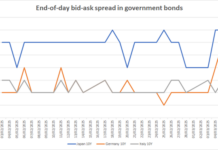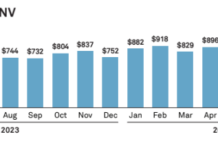Style investing is not just for stock investors. As ‘smart beta’ becomes more popular in other asset classes, investors want to know, “What’s been working?”

Tasha Gonska, vice president and head of pricing, valuations and reference data, interviews Amritpal Sidhu, senior director of quantamental research and solutions at S&P Global Market Intelligence, to discuss his latest paper, Bonding with Style Investing: Value and Momentum in Corporate Bonds.
Tasha Gonska: Your recent paper on applying ‘smart beta’ strategies to corporate bonds is generating increasing interest in the fixed income market. Can you briefly explain the core thesis of your paper?

Amritpal Sidhu: The core thesis of our paper is that value and momentum strategies can be effectively applied to corporate bonds. We focused separately on US investment-grade and high-yield bonds, demonstrating that these strategies have historically produced statistically significant alpha and offered diversification benefits when included in a broader portfolio.
That’s fascinating. These strategies have been staples in equity investing for years. What motivated you to explore their application in fixed income, particularly corporate bonds?
These strategies have been well-studied across asset classes, including fixed income. The motivation for this work stems from current bond market conditions, particularly in the US. Fixed income is more exciting now than it’s been in about 20 years.
You indicate in your paper that value and momentum strategies have historically produced strong risk-adjusted returns. Can you elaborate on how you defined and applied these strategies in this research?
For the value strategy, we focused on option-adjusted spreads (OAS), which measure a bond’s yield relative to similar maturity government bond yields and accounts for embedded options. Essentially, we targeted bonds with higher OAS relative to their fundamentals, which we interpreted as undervalued. For momentum, we looked at the 11-month cumulative excess returns, skipping the most recent month to avoid the short-term noise. Historically, bonds that had performed well over this period continued outperforming.
One of the key findings in your paper is the low correlation between these bond strategies and traditional equity styles. What implications does this have for portfolio diversification?
The low correlation is a crucial finding because it suggests that these strategies can be powerful diversifiers. Adding bond strategies like value and momentum to a fixed income or multi-asset portfolio has historically enhanced returns while reducing overall risk. This is particularly important in a multi-asset portfolio, where the goal is often to find uncorrelated return streams that can provide stability during market turbulence.
You also discussed the impact of liquidity on momentum strategies. Could you explain how liquidity influences the performance of these strategies in the bond market?
Liquidity plays a significant role, especially in fixed income markets, where bonds can vary widely in how frequently they trade. Our research showed that the momentum strategy has historically performed better in more liquid bonds – those that are actively traded. In illiquid markets, prices are often driven by models rather than actual transactions, which can introduce noise and obscure the momentum signal. By focusing on liquid bonds, we found a clearer and more consistent performance, with less risk of mispricing.
The paper also touches on the short-term reversal strategy, which showed strong historical performance but seems less reliable in practice. Can you shed some light on this?
The short-term reversal strategy is interesting but tricky. It involves buying bonds that underperformed in the previous month and selling those that outperformed. While it showed strong back-test results, we found that the alpha decays quickly – essentially, the signal loses effectiveness if there’s even a slight delay in implementation. This suggests that while the reversal strategy might look promising on paper, executing it successfully in real-world conditions is challenging.
Let’s talk about the data that underpins your research. Can you discuss how the mix of bond pricing and bond reference data from S&P Global Market Intelligence contributed to your findings?
The breadth and depth of S&P Global Market Intelligence datasets were essential to my research. For example, the bond pricing data includes daily updates on US, European, and Asian corporate bonds across different credit ratings and liquidity levels. The granularity of the data made it possible to perform a number of robustness tests.
Given your findings, what are the practical implications for investors? How should they approach implementing these strategies in their portfolios?
For investors, the practical takeaway is that value and momentum strategies can be effectively implemented in the bond market to enhance returns and diversify risk. However, it’s important to be mindful of liquidity, as it significantly impacts strategy performance. Investors should focus on liquid segments of the market and be cautious with strategies like short-term reversal, which may not perform as well in practice as they do in back-tests. Investors have historically benefitted from avoiding more speculative credit ratings such as CCC in general, and should be extra vigilant in the B rating category while implementing the value factor. Additionally, these strategies should be viewed as complements to, rather than replacements for, existing equity styles type strategies, given their low correlations and diversification benefits.
Finally, where do you see this research going next? Are there any areas you’re particularly excited to explore further?
There is still much to explore in applying smart beta strategies to fixed income. One area of particular interest to us is the information derived from equity and derivative markets, such as single-name credit default swaps (CDS), and its impact on bond returns. Additionally, we are eager to investigate other potential factors in the bond market that have not been as thoroughly studied, such as quality or low volatility. The fixed income space is vast, and we are only beginning to uncover its possibilities.
 Please scan the QR code to download the full paper.
Please scan the QR code to download the full paper.
©Markets Media Europe 2025























